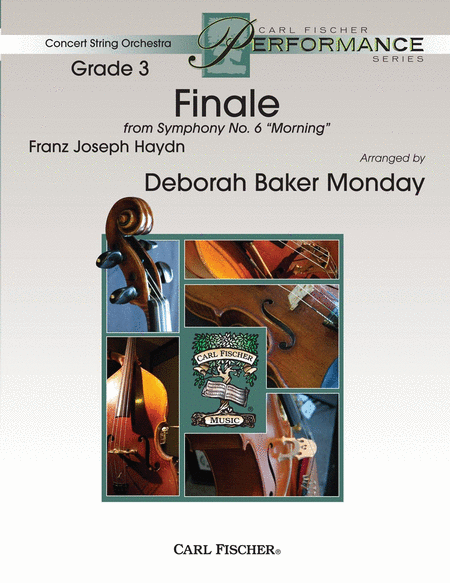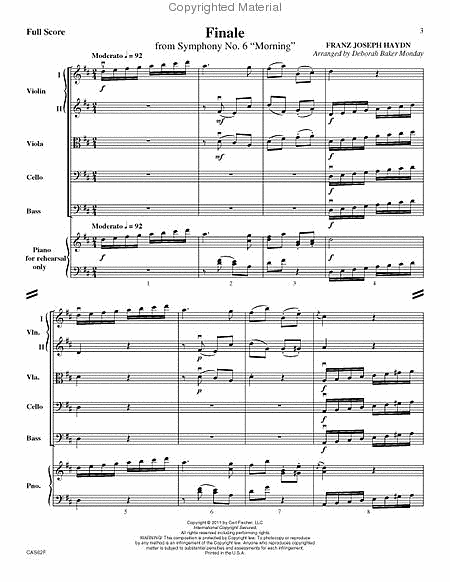Finale
From Symphony No. 6 "Morning"
-
Ships in 1 to 2 weeks
Details
Description
SKU: CF.CAS62
From Symphony No. 6 "Morning". Composed by Franz Joseph Haydn. Arranged by Deborah Baker Monday. Collate - FS SWS. Concert String Orchestra. Set of Score and Parts. With Standard notation. 16+16+4+10+10+10+6+16 pages. Duration 2 minutes, 58 seconds. Carl Fischer Music #CAS62. Published by Carl Fischer Music (CF.CAS62).ISBN 9780825884283. UPC: 798408084288. 8.5 x 11 inches. Key: D major.
Deborah Baker Monday presents us with a wonderful setting of an early Haydn symphony, which will challenge your group, but also inspire them to strive for musical excellence. This is a welcome addition to string orchestra repertoire, in that it allows you to use a fundamental work to teach the classical style.
Symphony No. 6 in D major was written in 1761. It was Haydn’s first symphonic work for his new employer Prince Esterhazy. He composed it for the instrumentalists at the court giving solo passages to the flute, violin and cello. In this arrangement the solo parts have been absorbed into the string orchestra setting.This symphony was given the nickname Morning because the opening Adagio depicts a sunrise. The rest of the work is Haydn’s next two symphonies, scored for the same instruments were nicknamed noon and evening and they have been called a triptych.The 4th movement (finale) is almost entirely based on scale passages. All sections of the orchestra play scales in different keys throughout the piece including D major, A major, E Major, C# minor, F# minor and b minor.Grace notes are part of the second theme. They are played before the beat, as quickly as possible. Students can postpone adding the grace notes until the principal notes are mastered if needed.This is a great piece for teaching sonata allegro form. Most of the material which occurs after the modulation to A major in the exposition comes back in the key of D in the recapitulation. This knowledge will help students with their approach to practicing.
About Carl Fischer Concert String Orchestra Series
This series of pieces (Grade 3 and higher) is designed for advancing ensembles. The pieces in this series are characterized by:
- Expanded use of rhythms, ranges and keys but technical demands are still carefully considered
- More comprehensive bowing techniques
- Viola T.C. included
- Careful selection of keys and degree of difficulty for advancing musicians


 Share
Share